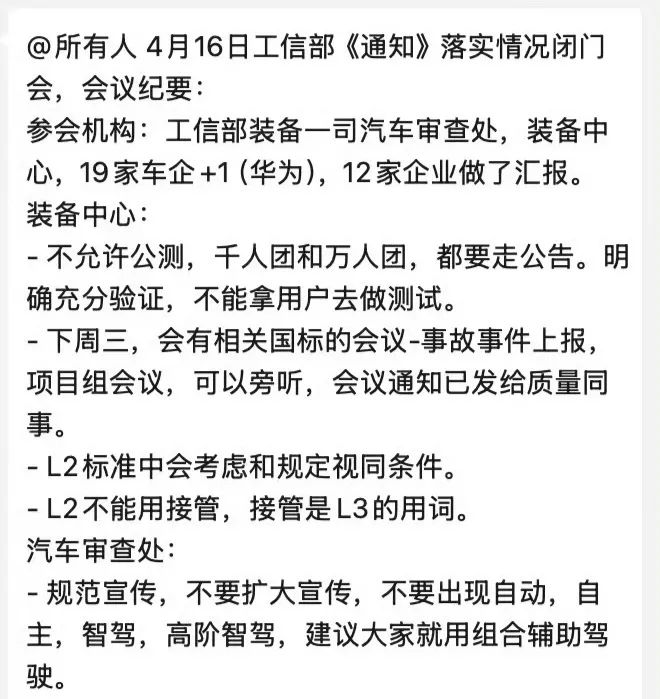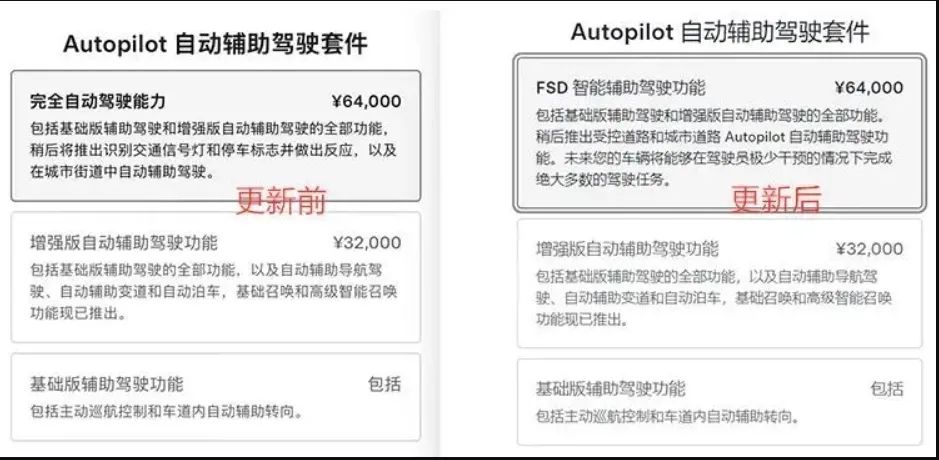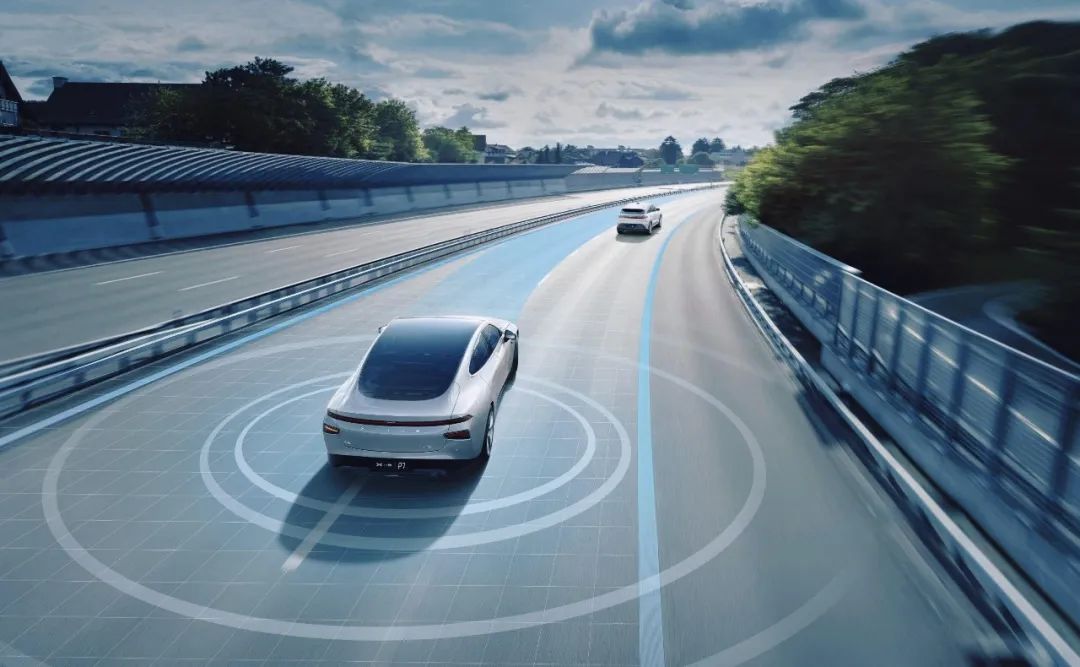"Intelligent Driving" Enters a Period of Disillusionment
![]() 04/21 2025
04/21 2025
![]() 440
440
The proliferation of intelligent driving technology for mass consumption has been subjected to stringent regulations.
As a catalyst in the domestic new energy vehicle market, Tesla has once again stirred up significant changes within the industry this year. Starting with the introduction of Full Self-Driving (FSD) in China, the competition for intelligent driving technologies has reached a fever pitch. The question on everyone's mind: How substantial is the gap between Tesla's FSD and domestic intelligent driving systems?
Behind this surge is the automotive industry's frenetic pursuit over the past year. Since Tesla launched the FSD V12 version in North America, domestic automakers have been eager to prove that they have surpassed Tesla.
Even earlier, the transition from Advanced Driver Assistance Systems (ADAS) to intelligent ADAS marked a pivotal shift, with intelligent driving becoming the focal point of the entire industry. From highway navigation to urban navigation, automakers embracing technological advancements have entered an era of intense competition.

As numerous modifiers were appended to L2 systems, intelligent driving began to stagnate. This frenzy came to an abrupt halt on March 29th, when a tragic car accident put the brakes on nearly nationwide enthusiasm for intelligent driving.
For a time, Xiaomi Automobile, once a public favorite, became the target of criticism, and "intelligent driving" became a key focus for local transportation department oversight.
On April 17th, multiple government departments issued a series of regulations, imposing the tightest controls yet on intelligent driving technologies.
Tightest Control
On April 16th, the Ministry of Industry and Information Technology convened a meeting to advance the product access and Over-The-Air (OTA) upgrade management of intelligent and connected vehicles. Nearly 60 representatives from major automakers attended, focusing on discussions regarding OTA upgrade filings and testing of driving assistance functions.
It was emphasized that automakers must thoroughly conduct combined driving assistance testing and verification, clarify system functional boundaries and safety response measures, refrain from exaggerated and misleading advertising, strictly fulfill the obligation to inform, effectively shoulder responsibility for production consistency and quality safety, and significantly enhance the safety standards of intelligent and connected vehicle products.
Additionally, relevant departments of the Ministry of Public Security issued a document on their official platform, emphasizing that ADAS is not equivalent to autonomous driving and clarifying that any accident responsibility caused by the ADAS system falls on the driver.

It was also stressed that if automakers exaggerate functions in their advertising and mislead consumers, it will constitute an illegal act, subject to administrative penalties, with severe cases potentially leading to criminal charges.
At the dawn of the so-called first year of intelligent driving proliferation, automakers find themselves under stringent regulations. The competent administrative departments have commenced rectifying the already chaotic promotion and utilization of intelligent driving technologies.
Under immense pressure, automakers are also facing stricter internal audits. In a conversation with an insider from a large state-owned automaker, it was revealed that the Ministry of Industry and Information Technology has currently raised red flags for all filings related to OTA upgrades for intelligent driving. OTA upgrades for key models can only be submitted for review after deletions.

Meanwhile, according to a circulated meeting summary, automakers will encounter even stricter regulations in their intelligent driving-related promotions.
Firstly, public testing is suspended. This includes so-called internal tests involving thousands or tens of thousands of users, which must be announced beforehand. Using users for testing is prohibited.
Secondly, advertising language must be standardized. Only ADAS can be used for levels below L3, and even the word "takeover" cannot appear in advertising. Terms like valet parking and remote control are also banned.
Regarding the authenticity of this meeting summary, clarity is currently lacking. However, one thing that can be confirmed is that not long ago, there was news that Tesla would rename its Chinese version of FSD, with the official website renaming the previous FSD fully autonomous driving capability to intelligent driving assistance function.

Tesla's action indicates that long before the Xiaomi accident, the competent authorities had already scrutinized the promotion of ADAS. Nonetheless, in the face of market competition, many automakers still harbor a gambler's mentality, seeking to capitalize on the so-called buzz.
Furthermore, since the launch of advanced ADAS functions, there have been numerous related accidents, with virtually no brand spared. However, due to insufficient attention, these incidents have not received significant focus, and there have even been cases where many car owners deliberately misuse ADAS.
In today's first year of intelligent driving proliferation, as it transitions from high-end to standard equipment, the action of the competent authorities serves as a timely correction to the misuse of intelligent driving. As effective self-regulation within the industry remains elusive, it relies on the competent administrative departments to intervene promptly to halt further losses. Strict management is merely the beginning, and it necessitates the participation of the entire populace.
Disillusionment for All
Regarding intelligent driving, the entire industry has actually indulged in a blind pursuit. Especially with the rise of AI, it seems to the general public that artificial intelligence is already capable of replacing humans in certain tasks.
However, driving a car on the road is inherently a risky endeavor, and human driving cannot avoid mistakes, let alone AI that learns from humans. Errors are inevitable.
From the automakers' perspective, intelligent driving has become a hot topic in the industry. To create a focal point in product promotion, it is crucial to consider the scale of promotion and maintain awe for technology, rather than merely serving promotional purposes and exaggerating capabilities to the brink of autonomous driving. No matter how many 9s follow L2.999, it cannot directly equate to L3.

Particularly, it is unclear when intelligent driving became an abbreviation for intelligent driving assistance, but this abbreviation omits the crucial auxiliary function, leading many consumers to believe that intelligent driving is synonymous with autonomous driving.
Therefore, in terms of advertising language, automakers should return to the essence. ADAS is just ADAS. No matter how intelligent the ADAS is, it can only serve as an auxiliary. Consumers should form a correct understanding, rather than relying on fine print reminders in promotional content.
As users, when utilizing ADAS functions, they must clearly comprehend the functional boundaries. Especially when learning about ADAS content, it cannot be a mere formality, as it is only through these intelligent driving tests that one can grasp how fragile the capabilities of intelligent driving actually are.
Moreover, when using it, there should be no gambler's mentality, and blindly relying on so-called "intelligent driving magic tools" to take shortcuts is unwise. Accidents represent numerical probabilities for the system but only two outcomes for users: 0 and 100%.

In media promotion, it is even more imperative to provide positive guidance. Especially in this era of nationwide self-media, platforms must shoulder corresponding responsibilities, promptly review content with negative guidance, and take decisive actions to rectify such content, akin to the previous decision to remove Lei Jun's live stream.
More importantly, administrative management and law enforcement departments need to possess the ability to anticipate technological hotspots. When violations are detected, they should be promptly managed, rather than waiting for the impact to gradually escalate before taking action.
Simultaneously, law enforcement departments cannot adopt a one-size-fits-all approach to such issues. Following this high-profile accident, reminders to disable ADAS have appeared on many highways.

Facing technological advancements, the entire industry should maintain a scientific and cautious attitude, avoiding blind adherence while also steering clear of blind opposition. It is essential to revert to the technological essence, form a clear regulatory framework, and ensure that technology is utilized within a controllable realm.
Concurrently, these issues are compelling legislative departments to promptly enact or amend laws to address new legal requirements arising from technological advancements, such as increasing penalties for illegal use of intelligent driving and incorporating ADAS usage content into motor vehicle driver's license exams.
Particularly, the lack of laws governing L3 and L4 autonomous driving has allowed some companies to downplay the concept of relevant classifications in their promotions, blurring the line between assistance and autonomy, leading to numerous current issues.

In the long run, this tightening of regulations is a necessary phase for the maturation of the intelligent driving industry. In the short term, automakers need to manage the rising costs of compliance and adjust promotion strategies; in the long term, policies lay the groundwork for technological innovation and safe development through "separating the wheat from the chaff".
More importantly, through this stringent management of ADAS, it is also propelling automakers and related R&D enterprises to make breakthroughs in higher-level autonomous driving technology, rather than getting stuck in the current limbo and evading responsibilities.
In the future, the industry must strike a balance between technological advancements, legal improvements, and user education to ensure that technology serves humanity more safely.
Note: Some images are sourced from the internet. Please contact us for removal if there is any infringement.







